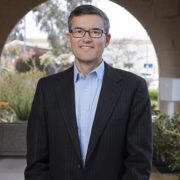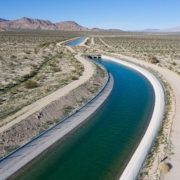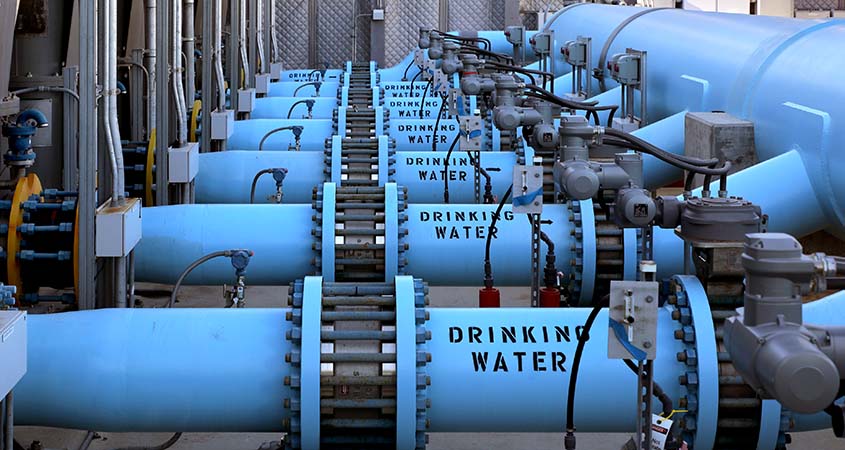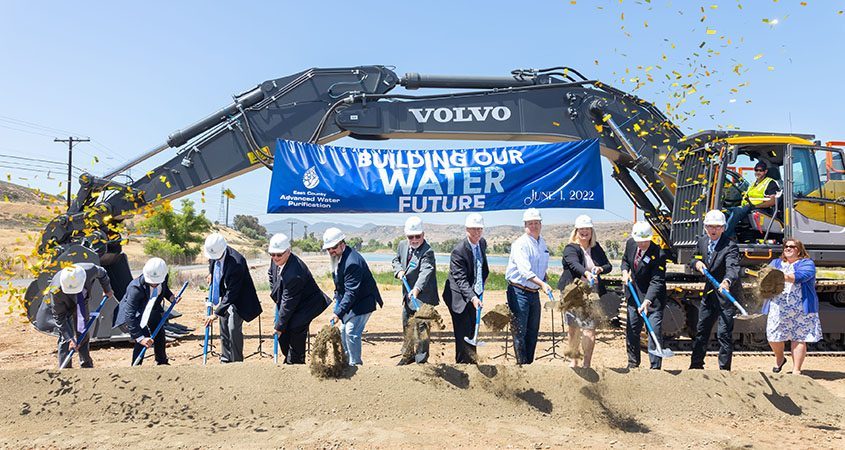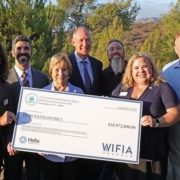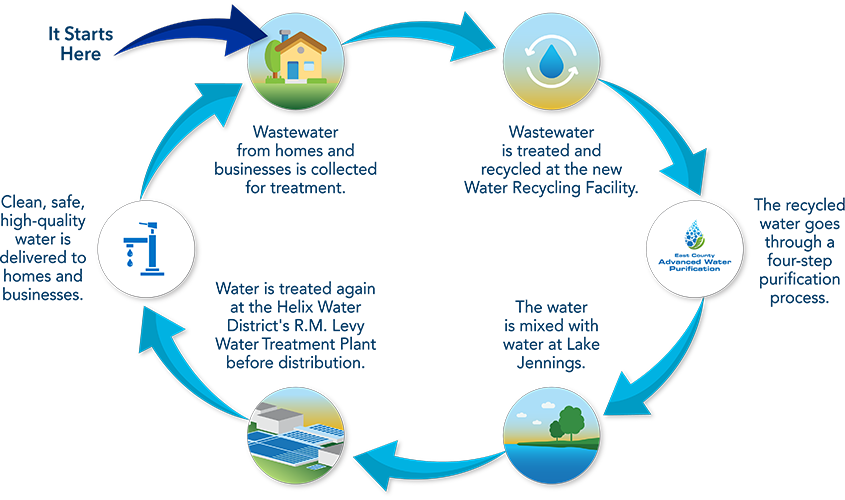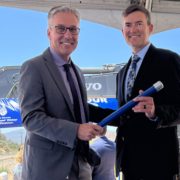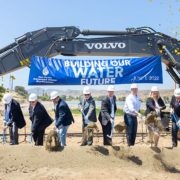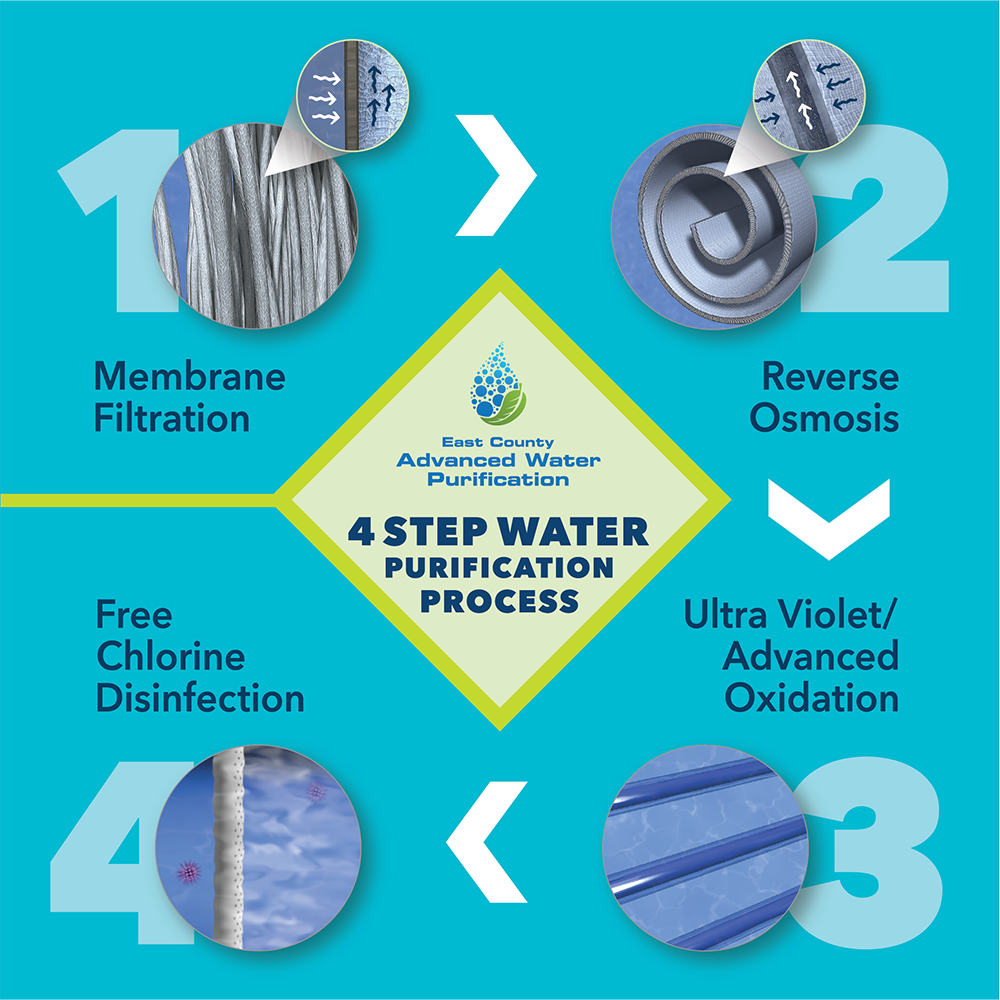Every Day is Earth Day for Water Agencies in San Diego County
“Invest in Our Planet” is the theme for Earth Day 2023. Investing in sustainable, local water supply sources and conservation has long been a way of life in San Diego County by water agencies and residents.
“Investing in our planet can take many forms, and the challenges we face differ from community to community,” said San Diego County Water Authority General Manager Sandra L. Kerl. “One investment I encourage San Diegans to think about on this Earth Day is landscape transformation. This is important because the biggest users of water at our homes are our landscapes – perhaps as much as 70% of our water use, depending on where we live.”
Sustainability is a priority of the Water Authority and its 24 member agencies. Maintaining a sustainable water supply ensures the vitality of San Diego County’s $268 billion economy and a safe, reliable supply for the region’s 3.3 million residents.
"The #EarthDay2023 theme “Invest in Our Planet” aligns perfectly with what the @sdcwa and its 24 member agencies have done for decades. It points to the necessity of dedicating time and resources to ensuring a sustainable water supply for our community." https://t.co/YOiozXknmV
— San Diego County Water Authority (@sdcwa) April 22, 2023
Earth Day and WaterSmart San Diego
Along with federal, state and local government support, including grant funds, the Water Authority and its 24-member agencies have developed diversified, sustainable, local water supply sources. The agencies also collaborate to secure funding for programs that help residents and businesses use water efficiently and smartly.
Using water efficiently has long been a way of life in the region. Conserving more of our most precious resource is a responsibility that comes with living in San Diego’s Mediterranean climate. Over the past decade, residents and businesses across the county have adopted “WaterSmart” plants, irrigation technologies and habits that not only save money, but also create vibrant yards, reduce energy use, protect natural resources and reduce landscape maintenance.
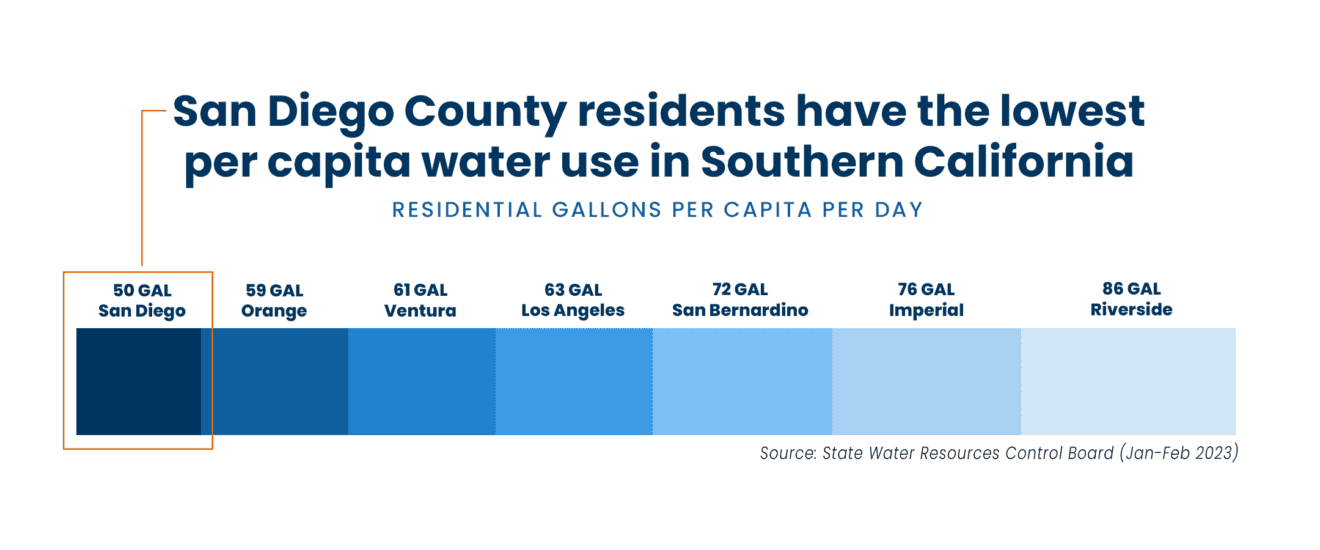
Invest in the Planet by Living WaterSmart
The Water Authority partners with other agencies and organizations to offer a variety of WaterSmart tools, including classes and rebates, along with a water-use calculator and other resources.
Increasing local supply sources also benefits the greater Southwest U.S. by reducing demand on imported sources. A hotter, drier climate in the arid west requires climate adapation solutions and region-wide collaboration to ensure water supply reliability.
Sustainable water projects
The Water Authority and its 24 member agencies have long-embraced sustainable practices to conserve water and energy. All water agencies work together on forward-thinking projects to expand local supply sources. By investing locally in water recycling, desalination and potable reuse projects, the agencies reduce the need for imported water, freeing those supplies for other parts of California and the Southwest U.S.
Olivenhain Recycled Water Pipeline
A new recycled water pipeline in Encinitas is helping to reduce the region’s dependence on imported water supply.
“Every drop of recycled water used on our landscapes replaces a drop of imported drinking water.” A new recycled water pipeline in Encinitas helps reduce the region’s dependence on imported water supply. https://t.co/1LQ8GC8ysh #EarthWeek2023 #cawater #sustainability
— San Diego County Water Authority (@sdcwa) April 18, 2023
East County AWP
Scheduled to be complete in 2026, the East County Advanced Water Purification Program will generate up to 11.5 million gallons per day of purified water— meeting approximately 30% of current drinking water demands for East San Diego County residents and businesses. “In 2045, potable reuse projects are going to provide up to 20% of the water that we need here in San Diego County,” said San Diego County Water Authority General Manager Sandra L. Kerl at the June 2022 groundbreaking. “This region has been excellent in its innovation and planning for water needs for the region.”
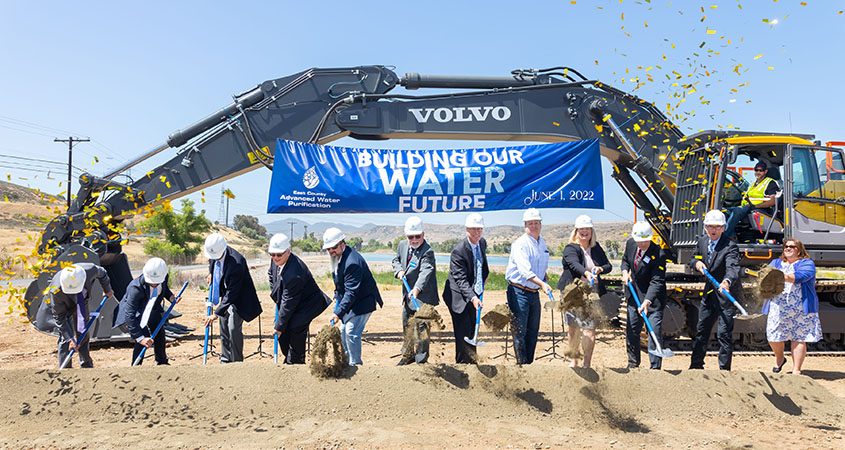
“In this year when many areas of California and the West are facing extreme hardships with drought, the East County AWP is really another step forward in reliability for its water supply partners and the region,” said Sandra L. Kerl, General Manager, San Diego County Water Authority, at the June 1 groundbreaking ceremony for the recycled water project. Photo: East County Advanced Water Purification Program
Pure Water Oceanside
The $70 million Pure Water Oceanside project uses advanced technology, including ultrafiltration, reverse osmosis and advanced oxidation to provide 3 million gallons per day or more than 20% of the City of Oceanside’s drinking water supply. The source of the recycled water to create the purified water is from the city’s own San Luis Rey Water Reclamation Facility.
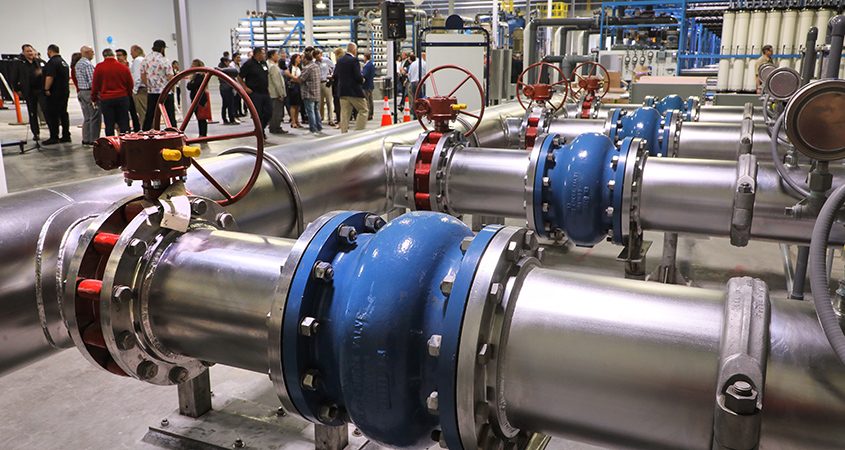
The $70 million project uses advanced technology, including ultrafiltration, reverse osmosis and advanced oxidation to provide 3 million gallons per day or more than 20% of the City of Oceanside’s drinking water supply. Photo: San Diego County Water Authority
Pure Water San Diego
Pure Water San Diego is the City of San Diego’s largest-ever infrastructure program that will provide nearly half of San Diego’s water supply by 2035. Pure Water will use purification technology to clean recycled wastewater and is a cost-effective investment for San Diego’s water supply needs.
Claude “Bud” Lewis Carlsbad Desalination Plant
The Claude “Bud” Lewis Carlsbad Desalination Plant has served more than 100 billion gallons of high-quality, locally controlled water over the past seven years – a milestone passed in late October 2022. The plant produces an average of more than 50 million gallons of high-quality water every day. It’s a foundational water supply for the San Diego region that minimizes vulnerability to drought and other water supply emergencies.
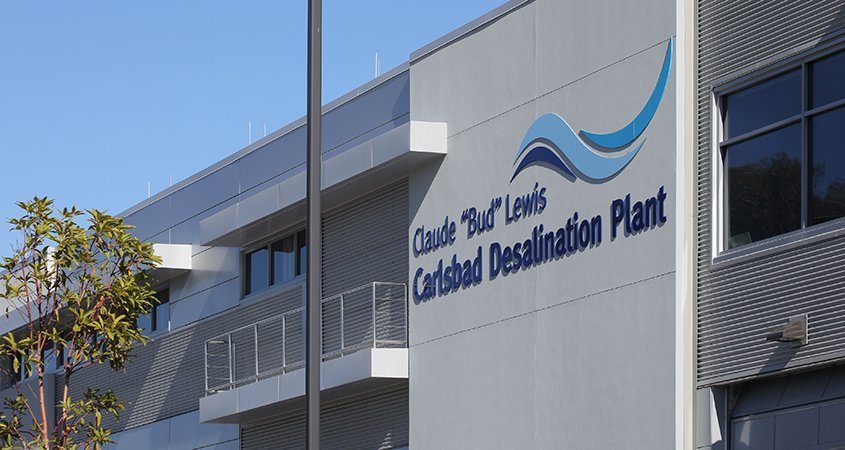
The Carlsbad Desalination Plant is the largest, most technologically advanced and energy-efficient desalination plant in the nation, and it has provided a sustainable water supply to residents and businesses in San Diego County since December 2015. Photo: San Diego County Water Authority
This is great news!
As we continue to confront increasingly frequent and intense droughts, today’s announcement is an exciting step in our efforts to provide sustainable, reliable water supplies for San Diego County. https://t.co/OH6l76KZT2
— Rep. Mike Levin (@RepMikeLevin) March 24, 2023
Cutting-Edge Renewable Energy Projects
Renewable energy from natural resources such as sunlight, wind and water is quickly becoming a critical component of California’s power supply. As a water supplier, the Water Authority pursues a variety of hydroelectric and solar energy projects to help reduce energy costs and stabilize water rates.
A power purchase agreement with CleanCapital enabled the Water Authority to install solar power systems at no cost. The solar power systems installed at the Water Authority’s Kearny Mesa headquarters, Escondido Operations Center and Twin Oaks Valley Water Treatment Plant produce an estimated 2.5 million kilowatt-hours of renewable energy each year. The 20-year agreement with CleanCapital will save the Water Authority approximately $3 million over the lifetime of the agreement, and supports the agency’s commitment to sustainability.
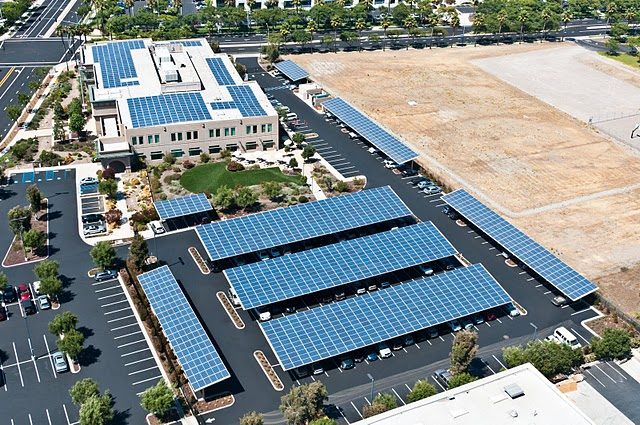
The solar power systems installed at the Water Authority’s Kearny Mesa headquarters, Escondido Operations Center and Twin Oaks Valley Water Treatment Plant produce an estimated 2.5 million kilowatt-hours of renewable energy each year. Photo: San Diego County Water Authority
Earth Week and Earth Day Events
Scheduled events are hosted by several City of San Diego departments, including Library, Sustainability and Mobility,
Transportation, Environmental Services and Parks and Recreation, and are all free to attend.
• Arbor Day Celebration Event – Saturday, April 22, 9 a.m. – 1 p.m. Join the City of San Diego at the 2023 Arbor Day Event in Mission Bay’s Vacation Isle, on Hibiscus Lane, as volunteers and City leaders plant trees and beautify the park, reminding us of the benefits of trees and our urban canopy.
• Creek to Bay Cleanup – Saturday, April 22, 9 a.m. – 12 p.m. Join Think Blue San Diego and partner I Love a Clean San Diego for the largest cleanup in San Diego County. Choose from 4,000 cleanup sites to volunteer and beautify our local environment.
• Earth Day Celebration at South Clairemont Recreation Center – Saturday, April 22, 10 a.m. – Noon. Join the City of San Diego Parks and Recreation Department at the South Clairmont Recreation Center, 3605 Clairemont Drive. The free event will include seed planting, a park cleanup, simple crafts and a self-guided scavenger hunt. There will be informational booths throughout the park as well. All ages are welcome.
Along with April’s celebratory events, the City of San Diego’s Climate Action and Climate Resilient SD plans, and other initiatives under the “Our Climate, Our Future” umbrella, demonstrate the City’s commitment to climate action and protecting the environment. These evolving programs will help the City achieve net zero greenhouse gas emissions by 2035 while benefitting residents through new economic opportunities, improving natural and urban spaces, and protecting vulnerable communities from climate threats like extreme heat, wildfires and sea level rise.
Ramona Municipal Water District Saturday, April 22. The Ramona Municipal Water District will have a booth at Sustainable Ramona‘s 2nd annual Ramona Earth Day Festival, Noon- 5 p.m. at the Ramona Community Garden, San Vicente Rd. and 11th Street, Ramona. Staff will have water conservation giveaways, answer questions about water and conservation, and also participate in the festival “Treasure Hunt” for children.
City of Escondido Saturday, April 22 9 a.m. – Noon. Escondido will be hosting two clean-up location sites in partnership with I Love a Clean San Diego at Dixon Lake and Reidy Creek. A 3D poster using recycled material and created by students in Escondido is displayed at the Escondido Arts Partnership Gallery on Grand Avenue in April.
The San Diego County Water Authority and 13 of its member agencies offer growers a special agricultural water rate program: providing lower-cost water in return for lower reliability. https://t.co/tYhqIQtPJo #EarthWeek2023 #cawater #sustainability #agriculture
— San Diego County Water Authority (@sdcwa) April 18, 2023
The Water Conservation Garden and San Diego Tree Week
San Diego Tree Week, April 22-29, an initiative of The Water Conservation Garden, is intended to bring neighbors together to plant trees in their community. Businesses, schools, and individuals will come together to celebrate the many benefits of trees. Details: thegarden.org/sd-treeweek/.
Celebrate San Diego Tree Week with with a tree and a treat on Apr 29, 10am-1pm. Learn about the the benefits of trees and ask the professionals how to care for them! There are a few spots for workshops and tree giveaway limited availability.
Register: https://t.co/kIQRtH4hwa pic.twitter.com/agHncKPKVH
— waterconservationgarden (@wcgarden) April 18, 2023
(Editor’s Note: The City of San Diego, City of Escondido, City of Oceanside, Helix Water District, Padre Dam Municipal Water District, Ramona Municipal Water District, Vallecitos Water District, and the Olivenhain Municipal Water District, are eight of the San Diego County Water Authority’s 24 member agencies that deliver water across the San Diego region.)


